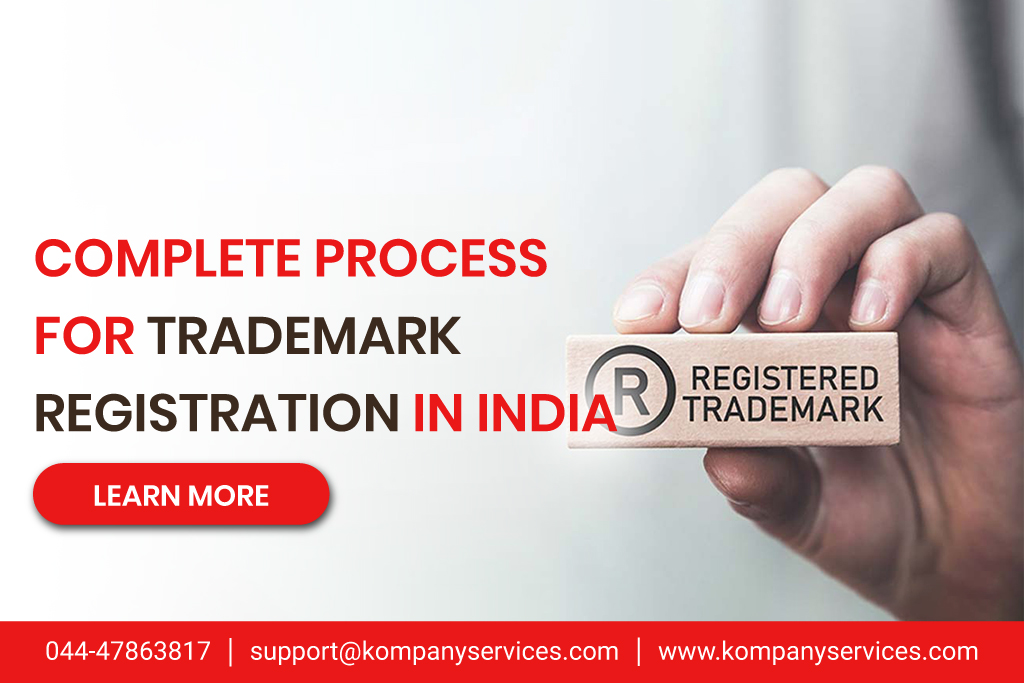A trademark is an intellectual property that identifies products or services from another. It is a visual representation of a name, word, label, device, or numeric characters used by a business to differentiate its goods or services from similar ones. Once registered, a trademark is an untouchable asset for a business, safeguarding the company’s investment in the brand or idea. Tendered trademarks, deceptive, generic, offensive, similar, or protected emblems cannot be registered.
In India, trademarks are registered by the Controller General of Patents Designs and Trademarks, Ministry of Commerce and Industry, Government of India. Trademarks are registered under the Trademark Act, 2016 and allow the trademark owner to sue for damages when contraventions occur. After registration, the symbol can be used by the owner for a fixed period of 10 years. However, registered trademarks approaching expiry can be renewed for an extended period of another 10 years.
The Different Types of Marks
Fanciful and Arbitrary– Fanciful and arbitrary words are the most powerful symbols. The mark itself doesn’t say anything about the product or service it’s linked to. A fanciful mark, on the other hand, is a completely made-up word, while an arbitrary made is a common word that doesn’t have anything to do with the goods or services it refers to. An arbitrary or fanciful brand is the best type. For example, Apple, the computer name, is an arbitrary patent. For instance, PEPSI is a fanciful brand.
Suggestive– Marks that are suggestive provide information about the commodity or service that they represent in a roundabout fashion. The trademark does not specifically define or allude to the product or service; rather, it simply makes oblique references to some of the qualities that are associated with the product or service. NETFLIX is a name that makes you think of something.
Descriptive– A descriptive mark is one that defines and makes direct reference to the product or service it represents. In accordance with the law, descriptive terms cannot be registered as trademarks. Alternatively, if the mark has acquired distinctiveness or a secondary meaning, it may be eligible for registration as a trademark. SUGARFREE is a descriptive trademark example because it alludes to a sugar substitute.
Generic– People often use the word “generic mark” to describe goods and services. One example of a general trademark is the word “PENCIL.” There is no reason to file a common word as a trademark under any circumstances. Still, after years of use, some brands have become well-known names. One example is the word “XEROX” which is now used for any kind of printing.
It is advised that you use a fanciful or arbitrary word to serve as your trademark. A descriptive mark can only provide limited legal protection when contrasted to a generic mark, which cannot be registered as a trademark under any circumstances.
Advantages Of Trademark Registration in India
- Trademark registration gives you the sole legal right to use your trademark in India and other commercially important nations.
- It bans unauthorized third-party use of your registered brand name or emblem.
- It protects your products or services from infringement.
- Trademark registration is valid for 10 years and can be renewed for another 10 years.
- The registered trademark owner has the option of transferring their registered trademark.
- Priority shall be granted to the individual who files for trademark registration first.
- Once the trademark registration procedure is completed, the customer and any third party will be aware that the items or services delivered under a registered trademark are the property of the trademark applicant.
- Furthermore, registering a trademark grants the exclusive right to use, sell, and alter the brand or goods in any way.
- It is crucial to register a trademark in India and other commercially important nations to protect your brand from third parties.
Required Documents for Trademark Registration in India
- A Power of Attorney allows you to appoint an attorney to file the trademark registration on your behalf.
- Information about the classes for which the trademark will be registered
- You desire to register a logo or brand name.
- A certificate of registration is required whether your firm is a start-up or an MSME. The government charge might be reduced by half.
- If you used a trademark in India before filing for registration, you may register the trademark from the date of first use. In that instance, you must produce an affidavit as well as documentation proof, such as invoices and registration certificates.
The Trademark Registration Process in India
Trademark Search:
A trademark search is required before trademark registration. Search to see whether another firm has registered the same or similar trademark. Internet trademark searches are possible. No matter how original your trademark is, you should look for it before registering it. A trademark search will also show you whether there are any confusingly similar marks.
Trademark Application Filing:
Submitting an application for trademark registration follows a trademark search. Form TM-A, which is used to apply for trademark registration, can be submitted digitally or manually.
Consider the following points before submitting your trademark registration application:
- The applicant’s (your) information
- The statement of use- the date since you have been using the mark or, in case you haven’t already used it, the date from which it is proposed.
- The mark chosen to be registered
- The list of goods or services which the mark will cover
Trademark Examination:
A trademark examiner will go through the application for any inconsistencies after it has been submitted. It might take two to four months from the application submission date to receive the examination report. The examiner has two possible grounds for raising an objection after reviewing the application:
- Relative grounds exist when a trademark in the Trademarks Register is confusingly similar to another trademark. The related grounds objection will be raised if the examiner finds that your mark is confusingly similar to an existing registered mark.
- Absolute grounds—when the mark lacks uniqueness or cannot identify one business’s goods or services from another. This frequently happens if you trademark a descriptive or generic word. If you use LOSE as a trademark for your weight-loss product, it will be denied since it is descriptive. As indicated, an arbitrary or fanciful trademark is preferable.
Your mark will be advertised in the Trademarks Journal if no objections are raised.
Response to the Examination Report:
You will have one month from the day you received the objections to respond to them. Your application will be considered abandoned if you do not respond within a month.
If you respond within a month and the Examiner accepts your submission, the mark will be advertised in the Trademarks Journal. If the Examiner has any additional concerns, you will be issued a show cause hearing. By providing the necessary documentation and documents to the Trademark Office’s Registrar of Trademarks/Hearing Officer, a trademark applicant may request a “show cause” hearing. A notice of hearing will be given 15 days before the scheduled hearing date. If persuaded, the Trademarks Hearing Officer/Registrar may submit the mark for publication in the Trademarks Journal. If the Trademark Registrar/Hearing Officer is not satisfied, he may abandon the mark.
Opposition to the registration of the mark:
The opposition period begins on the date the mark is advertised in the Trademarks Journal and ends four months later. The Registry requires that you use form TM-O to file your trademark objection. If the Registry determines that the criteria have been met, it will send you a notice. Within two months of receiving the notice of objection, you must file a counter-statement on Form TM-O.
After two months have passed without a response, the application will be considered abandoned. After that, both sides submit their respective evidence to the court.
The opposition must first file the evidence as an affidavit within two months of receiving the counter-statement. An alternative to filing an affidavit is for the opponent to just rely on the information provided in the notice. You have two months from the time you get the evidence or the waiver notification to submit it.
You may provide evidence in support of your counterclaim, or you may choose to rely only on the facts you presented there. Within one month after receiving your evidence or the notice of waiver, the opponent may submit additional evidence, if any.
After all relevant material has been submitted, the Registry will set a hearing date and notify the parties. After considering arguments from both sides, the Registrar will decide whether or not to register the trademark.
If no objection is submitted within this time frame, the mark will be registered.
Registration:
To complete the trademark application process, the Trade Mark Registry must now register the trademark and issue a digital copy of the registration certificate. The trademark registration will be effective as of the date of application and will last for a period of 10 years. Each decade, you’ll have the option to renew your registration. The TM-R form must be utilized for the renewal submission.
Time Period for Trademark Registration
There are several steps involved in applying for a trademark, so the process might be lengthy. The average time to register a trademark is between 18 and 24 months, assuming there is no resistance or other delays. After receiving the trademark certificate, the applicant will move quickly to finish the registration process.
The “R” marking indicates that the trademark holder is authorized to use the trademark in conjunction with the brand name or logo. The ministry does not send out hard copies of the certificate; rather, it may be accessed electronically by inputting the application number on the trademark website. If a Trademark attorney successfully completes the trademark registration process for you, you may start using the TM symbol in just a few short days. Get in touch with LegalRaasta to get your trademark processed quickly and simply.
How do we help trademark registration in India?
We offer comprehensive and affordable trademark registration services to help you establish your brand in India. Our team of experienced trademark attorneys will guide you through the entire process, from conducting a trademark search to filing your application and successfully navigating the government’s processing. Contact us for professional support and service related requirements.




